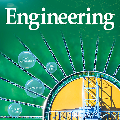Technology is increasingly used -- unintentionally (misinformation) or intentionally (disinformation) -- to spread false information at scale, with potentially broad-reaching societal effects. For example, technology enables increasingly realistic false images and videos, and hyper-personal targeting means different people may see different versions of reality. This report is the culmination of a PhD-level special topics course (https://courses.cs.washington.edu/courses/cse599b/18au/) in Computer Science & Engineering at the University of Washington's Paul G. Allen School in the fall of 2018. The goals of this course were to study (1) how technologies and today's technical platforms enable and support the creation and spread of such mis- and disinformation, as well as (2) how technical approaches could be used to mitigate these issues. In this report, we summarize the space of technology-enabled mis- and disinformation based on our investigations, and then surface our lessons and recommendations for technologists, researchers, platform designers, policymakers, and users.
翻译:越来越多的人使用 -- -- 无意(错误信息)或故意(虚假信息) -- -- 技术,在规模上传播虚假信息,可能会产生广泛的社会影响,例如,技术使得越来越现实的虚假图像和视频,超人目标化意味着不同的人可能看到不同的现实版本。本报告是2018年秋季华盛顿大学保罗·艾伦学院计算机科学与工程(Paul G. Allen学校)计算机科学与工程(https://courses.cs.washington.edu/course/cse599b/18au/)博士级特别专题课程的高潮。本课程的目的是研究:(1) 技术和当今的技术平台如何促成并支助这种错误和虚假信息的创造和传播,以及(2) 如何利用技术方法来缓解这些问题。我们在本报告中总结了基于我们调查的以技术为基础的错误和错误信息空间,然后向技术专家、研究人员、平台设计师、决策者和用户提出我们的经验教训和建议。





